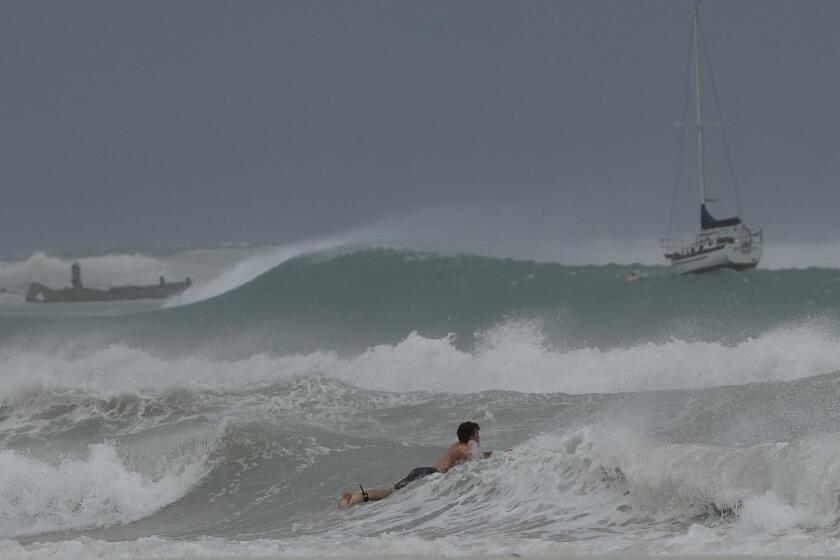Amateur Astronomer Nails Down His Second Comet
By day, Don Machholz is an assembly-line worker at a local fiber optics company. By night, he’s a star.
Well, sort of. Two comets he discovered have been named after the amateur astronomer. The latest, Machholz 1985-e, was formally recognized two weeks ago by the Cambridge Bureau of Astronomical Telegrams in Massachusetts.
In both sightings, Machholz, 32, of San Jose used a homemade cardboard telescope. He said it has a wide aperture, 10 inches across, that gives it a broader field of view than most commercial telescopes.
Through his lens, comets--composed of water, ice, dust, dirt, gases and chemicals--look like “dirty snowballs,” he said.
“Illuminated by the stars, they appear as bright, fuzzy elements. I appreciate the beauty of that.”
In 1978, he sighted a comet later named Machholz 1978-1. This took him 1,700 hours and 691 three-hour sessions of scanning the sky from atop Loma Prieta mountain near San Jose, he said.
He said 1,724 scanning hours and 694 nights passed before he found Machholz 1985-e on May 27. At the time, he was at a meeting of amateur astronomers at a YMCA camp near Big Bear in San Bernardino County.
Both comets are located in the eastern part of the “morning sky,” as astronomers call the night sky. It contains the winter Milky Way and the Orion constellation.
“That’s my favorite part of the sky,” said Machholz, who first became interested in star gazing at the age of 8. “You can always pick up interesting objects and nebulae.” Nebulae are clouds of interstellar gas and dust.
Like his first comet, Machholz 1985-e won’t be around long. It may disappear from telescopic view for about three weeks, from mid-June to early July, because of its proximity to the sun. After that, it will be visible for a few more months before its orbit takes it out of sight.
Daniel Green, assistant director of the Bureau of Astronomical Telegrams, said: “Any time a new comet is discovered, it’s of value. Astronomy is one of the few sciences where amateurs can still contribute significantly . . . .”
Machholz said his second comet is scientifically more important than the first because its orbit hurtles it as close as 10 million miles to the sun. The prediction of his comet’s orbit has not been confirmed by scientists.
Machholz 1985-e is the first new comet discovered this year. It was named “e” in the alphabetical sequence because four comets this year have been rediscovered, or resighted, after a period of orbiting out of telescopic view.
About 40% of comet sightings reportedly are made by amateurs. An average of five comets are discovered each year.
“Professional astronomers don’t have the time to sweep for comets,” Machholz said. “No one will pay them for that, and telescope time is expensive.”
His cardboard telescope hobby is less expensive, said Machholz, who works days mounting optical fibers at Cooper LaserSonics of San Jose, which builds medical lasers for surgery.
Machholz, a native of Virginia, began serious comet-hunting when he got out of the Navy in 1975. He said it’s a “challenge” and not always easy. “Sometimes at 1 a.m. it’s difficult to get out of bed.”
His wife, Laura, often comes with him, he said, though he claims she sleeps more than she watches as he scans the sky.



